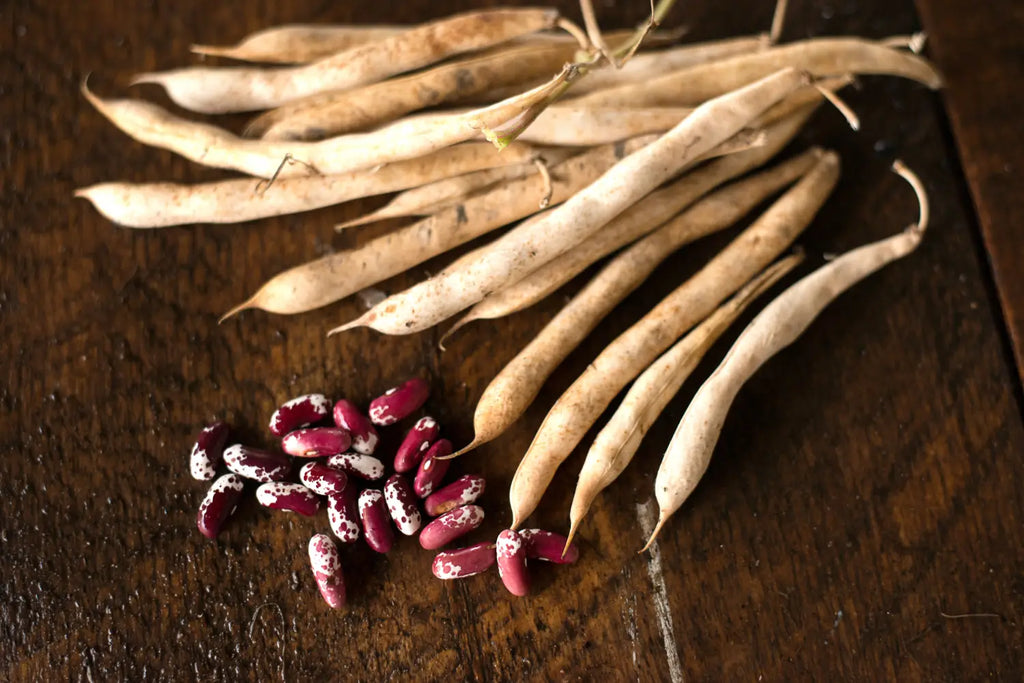Beans, beans the magical fruit, the more you eat… well, I’ll let you finish that one
It turns out, beans aren’t technically a ‘legume’ per say, they’re simply a part of the legume plant.
As if the tomato/fruit debate wasn’t enough!
The edible seeds found inside a legume are known as ‘pulses’ and they include peas, lentils and of course beans. Chickpeas, Kidney, Navy, and Pinto are the hearty and dense, mature, dried seeds we use for soups, stews, hummus and tacos. Green beans are more like the younger sibling - tender, young, unripened pods that are crunchy in texture and mild in flavor.
Humans have cultivated beans for thousands of years. Some of the earliest records come from Peru where beans were discovered in archaeological sites dating back to 6,000 B.C.!!! (Talk about heirlooms!)
They’re one of ‘The Three Sisters’ - An agricultural intercropping technique originating with the Iroquois. Beans, Corn and Squash were (and continue to be) grown amongst one another and in succession as each stage of their development supports the other two crops.
MAGIC BEANS
We have yet to find any ‘magic’ varieties that lead to golden geese, but it is clear, mother nature’s magic lives on in beans. They have a superpower: they capture nitrogen from the soil - WHAT?
The process involves a symbiotic relationship between bean and a nitrogen-fixing bacteria known as Rhizobia. This bacteria lives in the soil and when it comes in contact with the roots of a bean plant, it encourages the plant to form a structure known as a nodule. These nodules both feed the bacteria and provide a place for Rhizobia to convert ‘atmospheric nitrogen’ into plant usable ammonia. The beans take what they need and leave the excess behind in the soil. This reciprocal relationship means beans can thrive in poor soil conditions AND they leave the garden bed better than they found it - the consummate garden guest.
The vegetables that benefit most from nitrogen rich soils are tomatoes, peppers, corn, brassicas and leafy greens. Plant them in succession to get the most out of your garden soil.
Dried Beans
Beans are highly valued for their nutritional content and adaptability to grow in a variety of climates and soils. In ancient civilizations, they were often used as a form of currency - although, we do not suggest trading them for the family cow. They are an excellent source of plant based protein and are high in soluble and insoluble fiber which means they keep you fuller longer, help lower your cholesterol and keep things moving just like they’re ‘theme song’ suggests. (Don’t know it? Check with a local adolescent). They’re complex carbohydrates loaded with folate, thiamin, vitamin B6, iron, and potassium.
Green Beans
Cooks Illustrated named them the ‘MVP of the Produce Drawer.’ Green beans are yummy, nutritious and favored in cuisines around the world. They are rich in Vitamin C, K, beta-carotene and lutein; antioxidants that help protect your cells from damage caused by free radicals. These slender, vibrant pods are arguably one of the most versatile veggies you can add to your home garden. Roast them, blanch them, sautée or pluck them straight from the vine!
Pole, bush, yellow, purple, wax or dried - beans belong in every home garden and on every dinner plate. Just be careful what you say around them - ‘cuz those beans-talk! 😎




Nice article and funny, too.
Interesting article